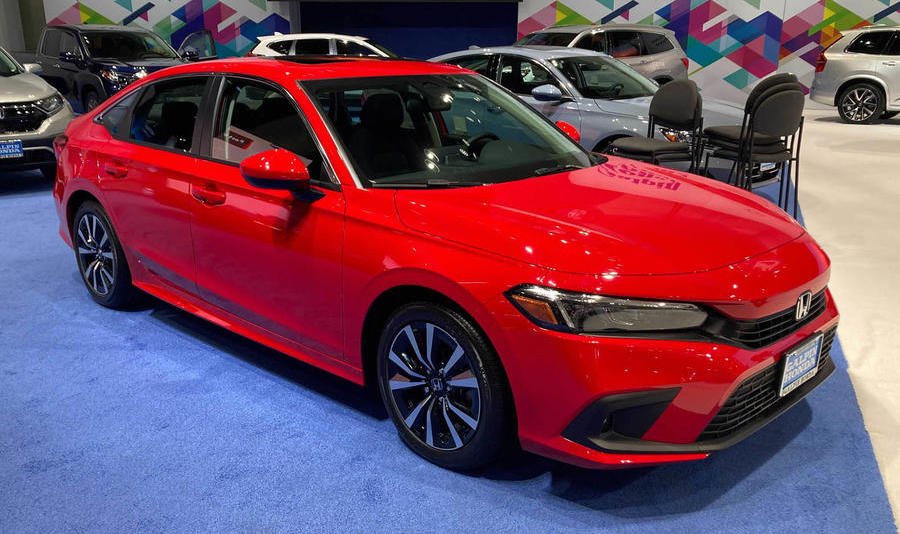The e:HEV system pairs a 1.5-litre Atkinson cycle petrol engine with a pair of electric motors, producing 108bhp in the Jazz and 129bhp in the HR-V. In hybrid mode, the petrol engine is used to generate power for the electric motor, reconnecting to the drive wheels via a single-speed gearbox under higher loads.
The larger CR-V SUV comes with a bigger 143bhp 2.0-litre petrol engine as part of its e:HEV system, but it is not yet confirmed which variations of the powertrain will be rolled out to Honda's Ford Focus rival.
The Civic is the final model in Honda's European portfolio to go hybrid-only, in line with its objective to electrify all mainstream passenger cars by the end of next year.
The hot Civic Type R, however, will retain a pure-combustion set-up, likely to be based around an evolved version of the current car's 'K20C1' 2.0-litre turbo four, which produces 316bhp - making it one of the most powerful front-drive cars on sale today.
The Japanese firm has taken an evolutionary approach for the 11th-generation Civic's styling, though notably the new car adopts a fastback-style sloping roofline, ditching the current model's prominent rear wing. The rear hatch itself is said to be lighter, and features smaller hinges for a cleaner roofline, while the A-pillars are two inches further back than on the current car and the wheelbase is 1.4in longer.
The Civic has been revealed in North American specification, but is largely representative of what we will get in Europe next year; the most obvious styling change will be the removal of the amber indicator lenses. The interior will be largely replicated, too, with the Mk11 Civic adopting a minimalistic and "human-centred" cabin design similar to the new HR-V and Jazz.
A honeycomb-style trim panel with integrated air vents runs the width of the dashboard, while a free-standing 7.0in infotainment touchscreen brings Apple CarPlay and Android Auto connectivity. In the US, top-spec cars get a 10.2in digital display, a Bose sound system, wireless charging and a larger 9.0in touchscreen, but European trim details have yet to be confirmed.
Rear-seat passengers benefit from 1.4in more leg room, while larger side windows aim to enhance the feeling of spaciousness and the new hatch design preserves head room.
Honda claims the new Civic brings a 19% improvement in torsional rigidity compared with its predecessor, which is said to bring enhanced ride quality, handling performance and refinement, while new adhesive and insulation methods reduce noise, vibration and harshness.
The hatchback is also, says Honda, more fun to drive, courtesy of new ball joints and bearings at the front that "improve steering feel and self-centring", a wider rear track that boosts stability and a 1.4in-longer wheelbase for improved ride quality.
Related News

